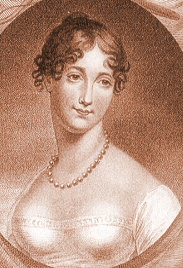Street with a riding whip.
The duel was the natural result.
The whole episode was well covered in various caricatures of the day.
Typical of many was one headlined "A fracas in St James's
Street, before a corner-house".
A handsome, manly young man, Webster-Wedderburn, seizes a dandy, Petersham, by the collar, and raises a horse whip. "I have caught you, have I, Master Sham Peter? How dare you attempt to injure my wife's character by saying you could play my part as well as I can, you boasting, lying dandy. Take that! and that! and that!!! Petersham, wasp-waisted and with beard and moustache, holds up his arms, exclaiming, "Me, Sir? You labor under a mistake. I am a gentleman and will resent this insult some other time"
A paragraph in the "British Press" of April 5, 1821, headed "Extraordinary Fracas in High Life", states that in a rencontre between Mr W.W. and Lord P., Mr W. used his cane and the most opprobrious epithets
Another engraving from April 1821, by John Fairburn, headed "Peter Sham-Peter Shampooed, or The Consequences of Kissing and Telling", and "taken from life
is St James's Street", Wedderburn (at right) takes the timorous Petersham by the collar, saying, "How dare you, you d--n scoundrel, make use of scandalous reports of my wife. You libel all that is either noble or fashionable.
| |
You ape. You infernal puppy. Take this horse-whipping as a proper reward for your insolence". Petersham, his knees flexed, answers, "Sir, Sir, what the Devil, eh Sir? Damn me, what d'ye mean, Sir? Chalk Farm, Sir, Manton's, a saw pit for this, Sir, by the blood of the Stand-ups, I will have satisfaction". A dandy watches with a pleased smile, between two ladies, each holding his arm. One says, "As I live it is Lord P. and Wed.Web. What can be the meaning of the rencontre?"
Others, similar, were headed "One of Lord Sham-Peter's Night Scenes, Brought to Light", "Peter-Sham's Love Duel", things like that. James comes out of it all sympathetically, but Petersham came in for such outrageous lampoons that it's amazing he ever held his head up in London again.
The duel was duly held, at Combe Wood, Kingston, near London, on April 21, 1821. It was farcical, of course, and well-covered again by the lampooners. There were rumors that Petersham had secretly taken the shot out of the pistols, but what happened is that the weapons were aimed harmlessly, and the two duelists reconciled.
The new King, George IV, for so long the Prince of Wales and for the last 15 years or so a friend of Webster's, had for some time been wondering how he could get rid of the Mr. for him and give him something more grand.
|
